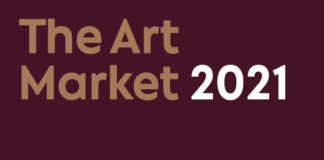
Just like many institutions in the United States, the North Carolina Aquarium in Pine Knoll Shores is currently closed due to the coronavirus crisis. And, again like many other institutions, the absence of visitors has caused serious financial difficulties for the aquarium; after all, although the facility has been closed since March, it still needs to be maintained and the approx. 5,000 animals living there still need to be fed.
According to media reports, the aquarium team decided that, to save costs, they would switch off the aquarium’s on-site artificial waterfall for the first time in 14 years. Once the waterfall was switched off, the aquarium employees could see clearly into the water – and were astounded to find a huge number of coins lying on the floor of the waterfall basin. As one employee told the press, the waterfall had never been intended to be a wishing well. But nevertheless, visitors had kept throwing their coins in – after all, you never know if it’ll bring you a bit of luck.
Running Short Of Change? Not A Chance!
The aquarium team decided to take advantage of the forced interruption in business, caused by the COVID crisis, to extract this “treasure” from their waterfall. The water was drained, and the collecting process began. In tourist hotspots, coins are collected from fountains on a regular basis, but not in this case. This loose change had been left to build up for 14 years and, in that time, an enormous number of coins had accumulated in the waterfall, as you can see from the photos on the aquarium’s Facebook page. According to the aquarium, the hoard of coins had a total volume of 380 litres. That’s equivalent to about 2.5 large bathtubs, filled to the brim with loose change! The employees then spent several weeks cleaning and sorting the coins and taking them to the bank. The aquarium team posted regular updates of the process on their Facebook page – which earned them an unusually high number of clicks as well as a high level of media attention. There was a lot of lively discussion over the final amount, with thousands joining a guessing contest on Facebook.
Welcome Relief in Difficult Times
On 21 August, the aquarium revealed the answer everyone had been waiting for: the hoard of loose change was worth an incredible $8,563.71. The aquarium is yet to reveal details about denominations, the number of foreign coins or any ancient coins that might have been among the hoard. And by the way, the closest guess was only one dollar off the final sum.
Now, this money is being used to care for the approx. 5,000 animals living in the aquarium. And it seems this support is desperately needed; the aquarium won’t be able to reopen any time soon as the situation in the USA remains critical.

Why Do We Throw Coins Into Fountains, Anyway?
For good luck of course! At least, that’s what people say. You can read more about the origins of this custom in a separate article. By the way, this tradition was brought into the modern age by a German archaeologist when, at the end of the 19th century, he made it fashionable to throw coins into the Trevi Fountain in Rome – a practice inspired by ancient Roman customs that quickly became popular among tourists. And it seems this tradition has spread from the Trevi Fountain across the entire globe – all the way to Pine Knoll Shores, North Carolina.
You can find lots of photos of the action on the aquarium’s Facebook page.
The great Frank Sinatra sang about “Three Coins In The Fountain”.
When we said the coins were “feeding the hungry fish”, this isn’t what we meant: a sea turtle in Thailand once had to have emergency surgery to remove 950 coins from her stomach. You can find out more about this story and all the background information in this article.




